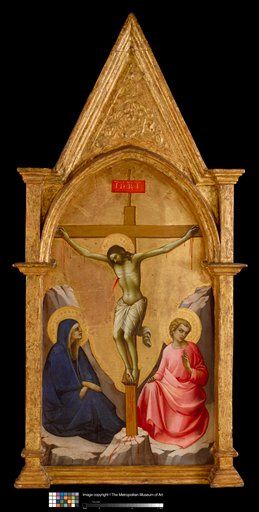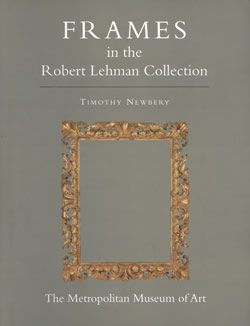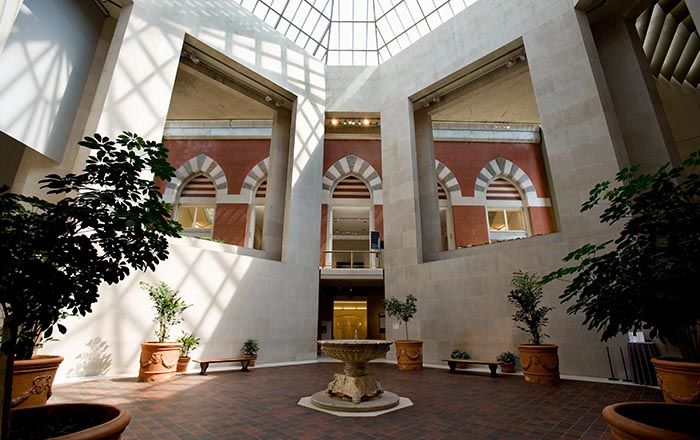Tabernacle frame
The regilding on the frame engaged to this 'Crucified Christ between the Virgin and Saint John the Evangelist' by Lorenzo Monaco (ca. 1370-1426) is datable to about 1950-60 and the capitals, bases, and bottom-edge molding are modern inventions, but the other moldings appear to be original. The lancet and pediment moldings are comparable to those on the fragments of original molding that survive on a 'Madonna and Child with Angels' in the Royal Collection, London, that Lorenzo Monaco's contemporary Gentile da Fabriano (1370-1427) painted for San Niccolò Oltrarno in Florence in 1425. The Lehman panel may have been the central pinnacle of an altarpiece Lorenzo Monaco painted in 1404, the central panel and two lateral pinnacles of which are in the Museo della Collegiata, Empoli. The way the lancet arch appears to widen to reveal the Crucifixion is dramatically reinforced by the strong horizontal moldings, which focus the viewer's attention on the horizontal timber of the cross, Christ's outstretched arms, and the look exchanged between the Virgin and Saint John. The shape of the frame's gabled top is repeated in the gold ground to create a mandorla with the Crucifixion at its center.
Due to rights restrictions, this image cannot be enlarged, viewed at full screen, or downloaded.
This artwork is meant to be viewed from right to left. Scroll left to view more.




